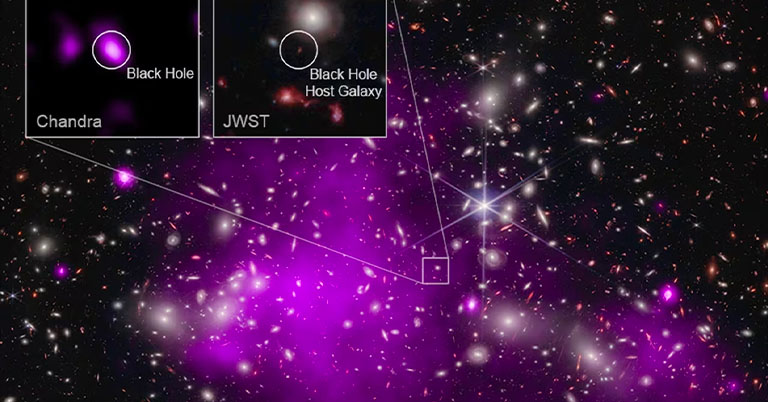
The observable universe, spanning 93 billion light years, houses an estimated 40 quintillion black holes. These enigmatic entities have intrigued us for decades. And recently, astronomers at NASA have discovered the oldest and most distant black hole. In this article, let’s dive into the formation and history of black holes including the implications of new discoveries like this one.
The Oldest Black Hole: Overview
Using two of NASA’s Chandra-X and Webb Telescopes, astronomers were able to find the oldest Black Hole ever formed. With the help of these space eyes, researchers were able to find the spot of an emerging black hole that formed 450 million years after the Big Bang, roughly 13.4 Billion years ago. Before understanding the methods, let’s understand what a black hole means.
Enigma of a Black Hole
A Black Hole is any region in space, where the gravity is so strong, that nothing including light can escape. However, the black hole isn’t as empty spaces as the name might suggest, but rather a region packed up with a large amount of matter in a very small area. Imagine, a pickle jar that could take all the matter from a mountain-sized pickle and compact it down to fit into this small container. Thus, by creating a jar so dense and massive that it distorts space and time, just like a real black hole. But instead of pickles, they are these big stars that weigh 20 times more than the mass of the sun.
How do they form?
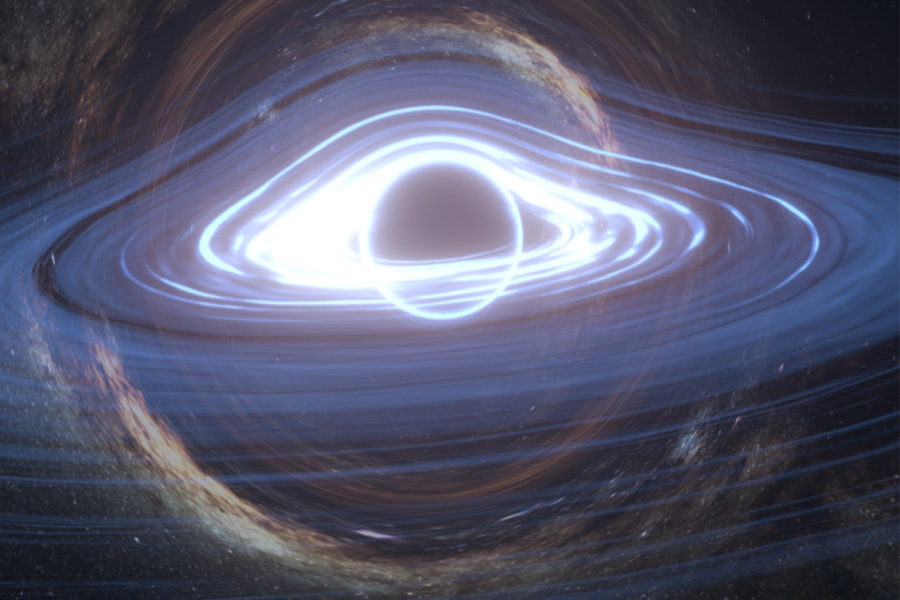
Very massive stars die and form black holes. When a massive star (tens of solar masses) reaches the end of its life, it becomes unstable, collapses, and sheds its outer layers. The matter falling from all sides compresses the star, reducing its volume to zero and increasing its density to infinity.
Structure of Black Hole
A black hole comprises a singularity at its core, where as mentioned above the density reaches infinity and volume becomes zero. Surrounding this, the event horizon marks a boundary beyond which nothing, not even light, can escape the black hole’s gravitational pull. The ergosphere, outside the event horizon, enforces the rotation of spacetime in tandem with the black hole’s spin.
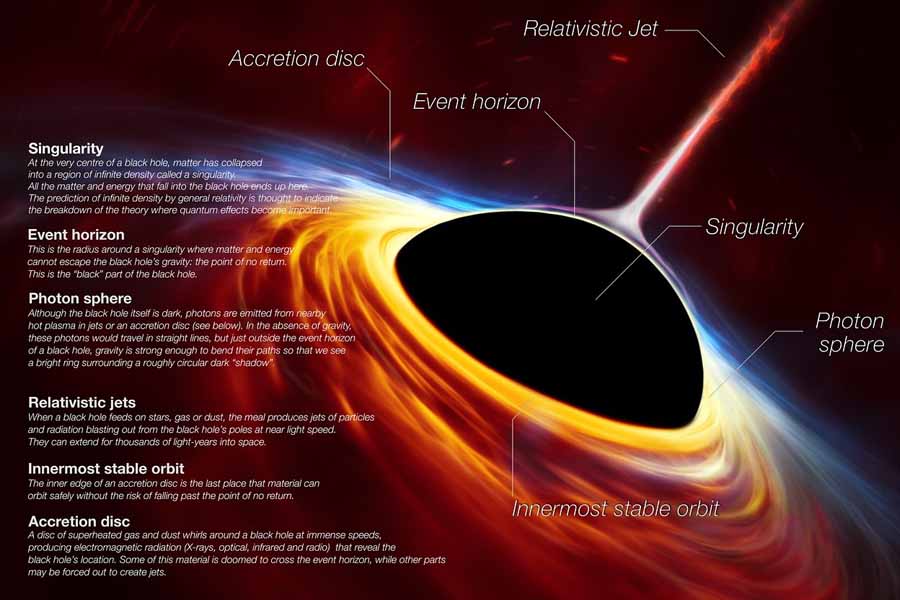
Beyond the event horizon lies the photon sphere, where photons can theoretically orbit the black hole. Additionally, in many black hole systems, an accretion disk forms—a rotating disk of matter spiraling into the black hole, emitting various forms of radiation due to intense gravitational forces. This structural composition defines the intriguing and complex nature of black holes.
you might want to read this
- Samsung is building its own ChatGPT-Like AI for Galaxy Devices
- Has MDMS finally gone LIVE? Is the end for grey phones?
- OpenAI Announces GPT Store: An Appstore for GPTs
History of Black Holes
“Black Hole” in itself is a relatively new term coined by physicist John Wheeler in 1969. However, the original proposed theory dates back to Karl Schwartzchild.In 1916, Schwarzschild, using Einstein’s general theory of relativity, inferred that any object in the universe could become a black hole if compressed tightly enough. Later, in 1971, astronomers studying the constellations considered the theory scientific as they discovered the first-ever black hole.
Theory of General Relativity and Einstein’s Contribution
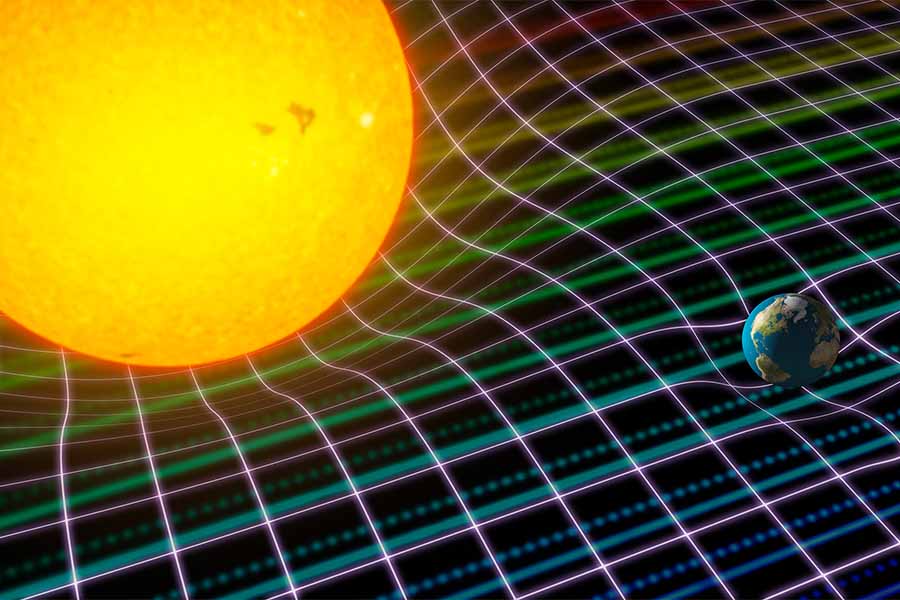
Albert Einstein’s geometric theory of gravitation was published in 1915 namely the theory of general relativity. Within this framework, Einstein proposed that massive objects, like stars, possess the ability to warp the fabric of spacetime around them, creating a gravitational field. His equations not only predicted the gravitational collapse of massive stars but also foretold the formation of singularities—points of infinite density—within black holes. Additionally, Einstein’s theory predicted the existence of an event horizon, a boundary signifying the point of no return ensured by a black hole’s gravitational pull.
Gravitational Lensing
Einstein’s visionary insights didn’t stop at black holes; they extended to the concept of gravitational lensing. The gravitational field of massive objects acts as a cosmic lens, bending and distorting the light from objects situated behind them. In accordance, this theory was empirically confirmed during a solar eclipse in 1919. Gravitational lensing enables astronomers to study distant celestial objects. It also provides additional evidence of the gravitational warping of spacetime, which became an essential tool for studying black Hole
Hypothesis or a scientific theory?
In 2015, a century after the inception of general relativity, scientists validated Einstein’s predictions by detecting gravitational waves—ripples in spacetime—emanating from the collision of two black holes. This observation, performed by the LIGO (Laser Interferometer Gravitational-Wave Observatory), marked a groundbreaking confirmation of black holes as outlined by his equations.
So.. how did they spot the “Oldest Black Hole Ever”?
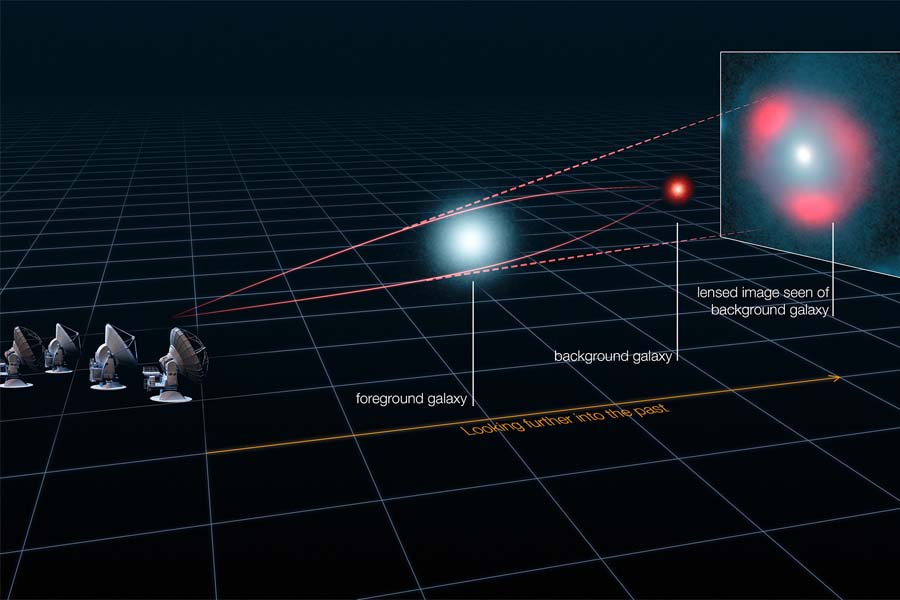
Gravitational Lensing played a key instrument as it boosted the amount of light that could be detected. Researchers used gravitational lensing to detect black holes by leveraging the magnifying effect of galactic clusters. These clusters, acting like natural magnifying glasses, warp and amplify the light from distant galaxies in the background. This gravitational lensing phenomenon enables scientists to observe and study otherwise invisible celestial features, including various types of black holes.
Where did they find it?
Astronomers, using the Webb telescope, identified a black hole in the galaxy UHZ1. Initially appearing in the same direction as the Abell 2744 galaxy cluster, located about 3.5 billion light-years away, further data revealed that UHZ1 is significantly more distant. Moreover, it was found to be situated beyond the cluster at a distance of 13.2 billion light-years from Earth.
The Oldest Black Hole: Conclusion
The discoveries of ancient black holes significantly contribute to our understanding of the universe’s evolution. Identifying and studying these primordial entities offers important insights into the early stages of the universe. Not only that, through the help of these telescopes, we could potentially unravel the mysteries of the universe. Such as the origin of the universe, causality, infinite regression, or be it the first cause problem. In addition, these question also fundamentally pertains to our philosophical and existential burdens.
Moreover, these discoveries highlight the active role of black holes in cosmic structure formation. In addition, it also gives clues about how evolution persists on a cosmic scale —a period marking the universe’s transition from an opaque state to a transparent yet chaotic one.
You can also watch our review of the Apple Watch Ultra 2 Vs Series 9:







![Best Gaming Laptops in Nepal Under Rs. 250,000 (रु 2.5 Lakhs) [2025] Best Gaming Laptops Under 2.5 lakhs in Nepal [Feb 2025 Update]](https://cdn.gadgetbytenepal.com/wp-content/uploads/2025/02/Best-Gaming-Laptops-Under-2.5-lakhs-in-Nepal-Feb-2025-Update.jpg)
![Best Gaming Laptops in Nepal Under Rs. 120,000 (रु 1.2 Lakhs) [2025] Best Budget Gaming Laptops Under Rs 120000 in Nepal 2025 Update](https://cdn.gadgetbytenepal.com/wp-content/uploads/2025/05/Best-Budget-Gaming-Laptops-Under-Rs-120000-in-Nepal-2024-Update.jpg)
![Best Laptops Under Rs. 80,000 in Nepal [2025] Best Laptops Under 80,000 in Nepal March 2025 Update](https://cdn.gadgetbytenepal.com/wp-content/uploads/2025/03/Best-Laptops-Under-80000-in-Nepal-March-2025-Update.jpg)
![Best Gaming Laptops in Nepal Under Rs. 200,000 (रु 2 Lakhs) [2025] Best gaming lapotp under 2 lakhs Nepal Feb 2025](https://cdn.gadgetbytenepal.com/wp-content/uploads/2025/01/Best-Gaming-Laptops-Under-2-Lakh-Nepal-Feb-2025-Update.jpg)

![Best Mobile Phones Under Rs. 15,000 in Nepal [Updated 2025] Best Phones Under 15000 in Nepal 2024 Budget Smartphones Cheap Affordable](https://cdn.gadgetbytenepal.com/wp-content/uploads/2024/03/Best-Phones-Under-15000-in-Nepal-2024.jpg)
![Best Mobile Phones Under Rs. 20,000 in Nepal [Updated] Best Mobile Phones Under NPR 20000 in Nepal 2023 Updated Samsung Xiaomi Redmi POCO Realme Narzo Benco](https://cdn.gadgetbytenepal.com/wp-content/uploads/2024/01/Best-Phones-Under-20000-in-Nepal-2024.jpg)
![Best Mobile Phones Under Rs. 30,000 in Nepal [Updated 2025] Best Phones Under 30000 in Nepal](https://cdn.gadgetbytenepal.com/wp-content/uploads/2025/01/Best-Phones-Under-30000-in-Nepal.jpg)
![Best Mobile Phones Under Rs. 40,000 in Nepal [Updated 2025] Best Phones Under 40000 in Nepal 2024 Smartphones Mobile Midrange](https://cdn.gadgetbytenepal.com/wp-content/uploads/2024/02/Best-Phones-Under-40000-in-Nepal-2024.jpg)
![Best Mobile Phones Under Rs. 50,000 in Nepal [Updated 2025] Best Phones Under 50000 in Nepal](https://cdn.gadgetbytenepal.com/wp-content/uploads/2025/01/Best-Phones-Under-50000-in-Nepal.jpg)
![Best Flagship Smartphones To Buy In Nepal [Updated] Best flagship phone 2025](https://cdn.gadgetbytenepal.com/wp-content/uploads/2024/07/Best-Flagship-Phones-who-is-it-ft-1.jpg)